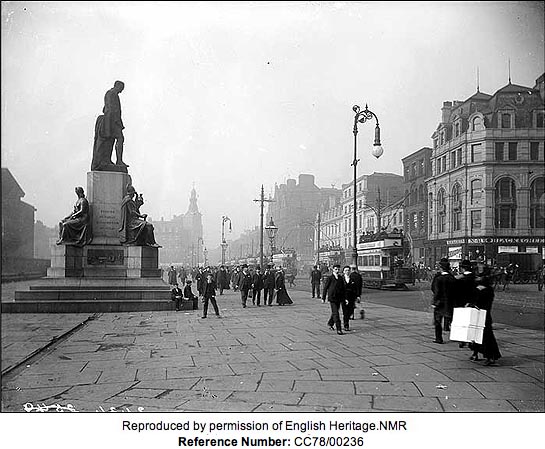|
The Duke of Wellington
|
 One of England's greatest heroes, Arthur Wesley, the Duke of Wellington, was actually born in Ireland and perhaps even more astounding considering his achievements his education included time at a French Military School. He was commissioned into the army at the age of 18 and when he was only 22 he was commanding the British Army in Portugal and Spain. He was created Duke of Wellington in 1814 and in the following year he cemented his reputation by defeating Naploeon at Waterloo.   After the army he took up
politics first in the Irish Parliament and
then as MP for Rye, in Sussex. In 1827 at the age of 58 he became
Prime Minister. His government lost power during the 1830s but in
1834 Wellington returned as Foreign Secretary in Robert Peel's
government. He died in 1852 and was buried in St. Paul's
Cathedral.
 On the Esplanade in Piccadilly
Queen Victoria sits on her throne flanked by Robert Peel on her
lefthand and The Duke of Wellington on her right. The larger than
life bronze statue of Wellington shows him in uniform addressing the
House of Lords. Four figures sit below him. They are are
the figures of Minerva, representing wisdom, Mars, sword in hand,
exemplifying valour, Victory, holding a wreath of oak leaves and a
palm, and Peace, holding a palm, a cornucopia at her feet.
 Around the plinth are 4
bas-relief panels depicting his roles as soldier and statesman.
   Above the Battle of Waterloo. Below showing Wellington at the Congress of Vienna in 1815  |